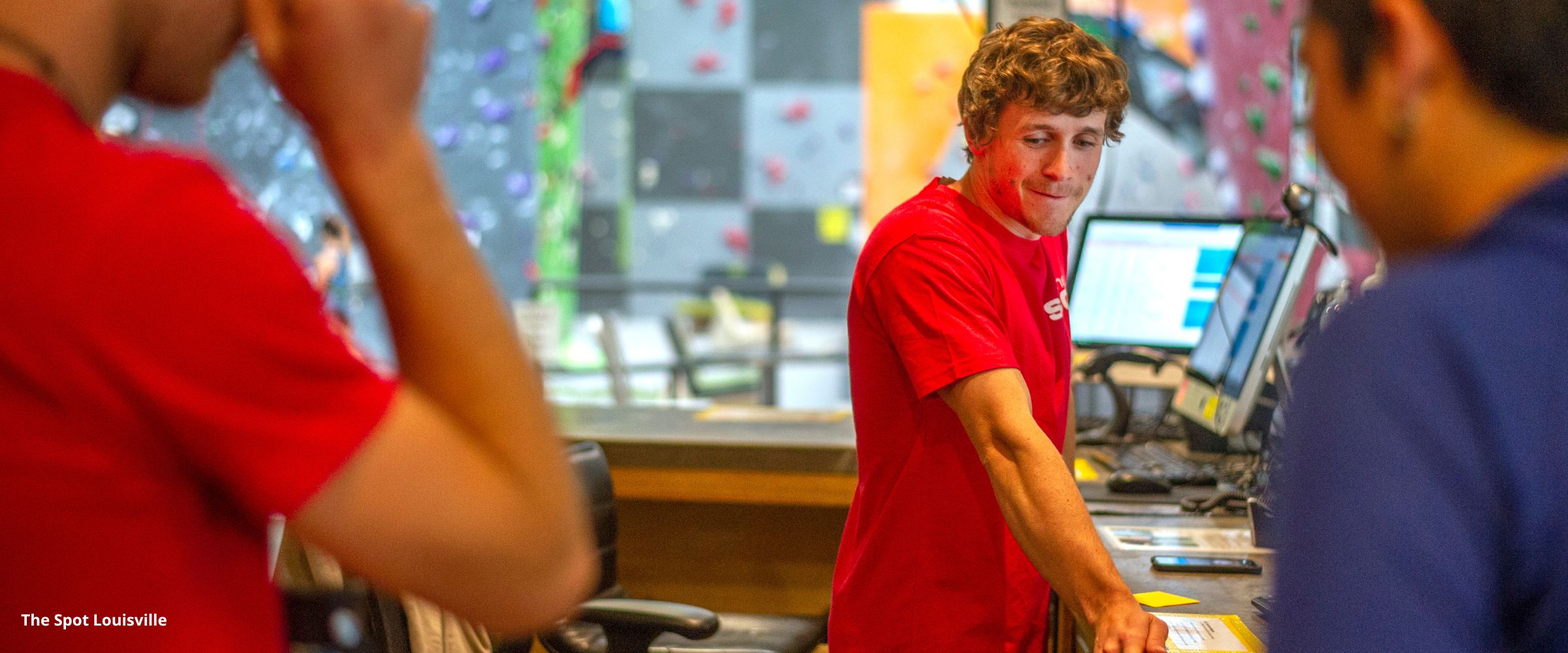Practical Strategies for Training Staff

Training youth climbing program staff can be a challenge. Staff with varying levels of experience, high turnover, and lack of time are common obstacles to creating and implementing high-quality staff training. Quality staff training is an important element in creating high-quality youth programs that meet the needs of the participants, staff, and organization as a whole, and should be invested in.
Why Staff Training is Important
There are countless reasons to implement a quality and consistent staff training program for your team. Providing great training shows your staff that they are valued and that your organization wants to invest in opportunities for them to grow in their roles. 65 percent of employees listed professional development as a top three job perk, according to a Gallup poll. meaning your staff wants to learn!
Staff training helps create consistency in your program. When all of your employees are trained in the same way to deliver programming in a consistent format, the program is easier to scale and easier to steer toward the goals of the participants, your program, and the larger organization. Finally, when staff is well trained in delivering best-in-class programming, the participant's experiences in the program improve. Positive participant experiences are a key ingredient in selling your program and maxing out enrollment.
What Should Staff Training Look Like
Staff training, similar to youth programming, is an educational process and thus should adopt an educational philosophy. First and foremost, staff training should be goal oriented. Specific and explicit goals should guide training and they should be scaffolded and address multiple learning styles. They must be tied closely to assessable staff skills and program goals. In order to understand the efficacy of your training, there must be a way to assess the impact they are having on your staff and program as a whole.
How to Build a Comprehensive Training Plan
Building a training plan is most effectively done with a backward educational design approach. In other words, you need to first identify where you want your program and your staff to be before you start thinking about HOW you will get them there.
The first step in this process is goal identification. This is the process of identifying the goals of your organization, youth program, and participants. These goals may already exist and be tied to the values and mission of the organization, or they may not yet exist and must be created and explicitly stated.
READ ALSO: Teach Staff to Overcome Challenges
These goals need to be the destination that your training steers toward. If they are not identified explicitly before developing and implementing a training plan, there will be no way of knowing if the training is getting your program closer to where you want it to be. Next, your program must clarify how meeting your goals will be assessed. Only once your goals are identified and an assessment plan is designed will you design the format and tools you will use to meet those goals. The following is a (simplified) example of this process.
Develop a Staff Training Program, in Reverse
- Program Goal: Provide best-in-class instruction that engages participants from the beginning to the end of practice.
- Specific Trainable Skills: Coach uses group management techniques throughout practice to ensure the engagement of participants. Coach creates and delivers a practice plan that includes “no un-programmed time”
- Assessment Plan: Practice observations: What specific group management strategies did the coach use during practice? Do participants know the expectations at any given time during practice?
- If the coach is successfully using these skills, is this helping move the program closer to its goal of providing best-in-class instruction that engages participants from the beginning to the end of practice?
- How, Specifically? We plan to address the specifics of training assessments in a future blog post.
- Once this process is completed, the next step is planning and implementing the training.
Different tools:
In-person training is the most obvious tool we have to get program staff on the same page. However, other less time-intensive techniques can be highly effective at creating consistent programs. Using experienced staff and a structured mentorship program with managerial assessment can make great strides in program consistency and training.
Developing consistent planning tools and shared resources that are audited by management can also function as a training tool. The goals and assessment tools will guide you to the format that works best for you.
We would love to hear from you all about the training tools that work in your programs!
Want more programming tips? Sign up to join the CWA Newsletter.
About the Headwall Group
 The Headwall Group was founded by Bix Firer and Pat Brehm. Bix Firer (MA, University of Chicago) is an Associate Professor of Outdoor Studies at Alaska Pacific University and has worked as a wilderness educator, trainer, facilitator, and experiential educator for over a decade.
The Headwall Group was founded by Bix Firer and Pat Brehm. Bix Firer (MA, University of Chicago) is an Associate Professor of Outdoor Studies at Alaska Pacific University and has worked as a wilderness educator, trainer, facilitator, and experiential educator for over a decade.
Pat Brehm works as a professional organizational trainer and has spent his career as a climbing coach, facilitator, and outdoor educator.
